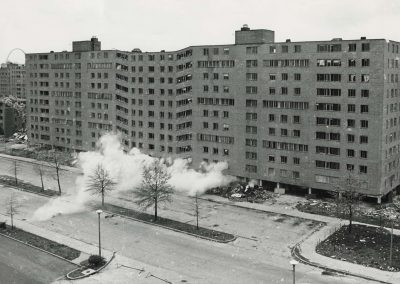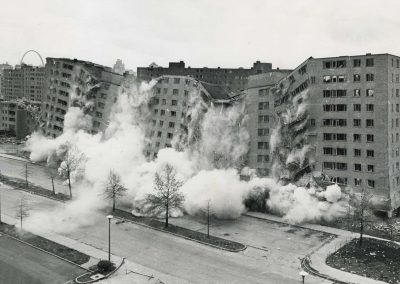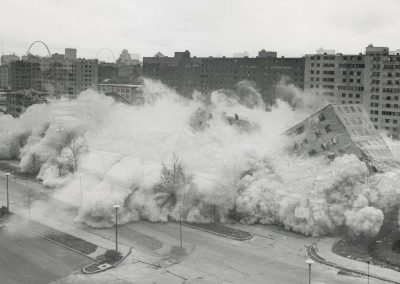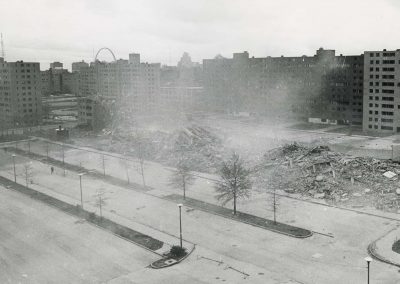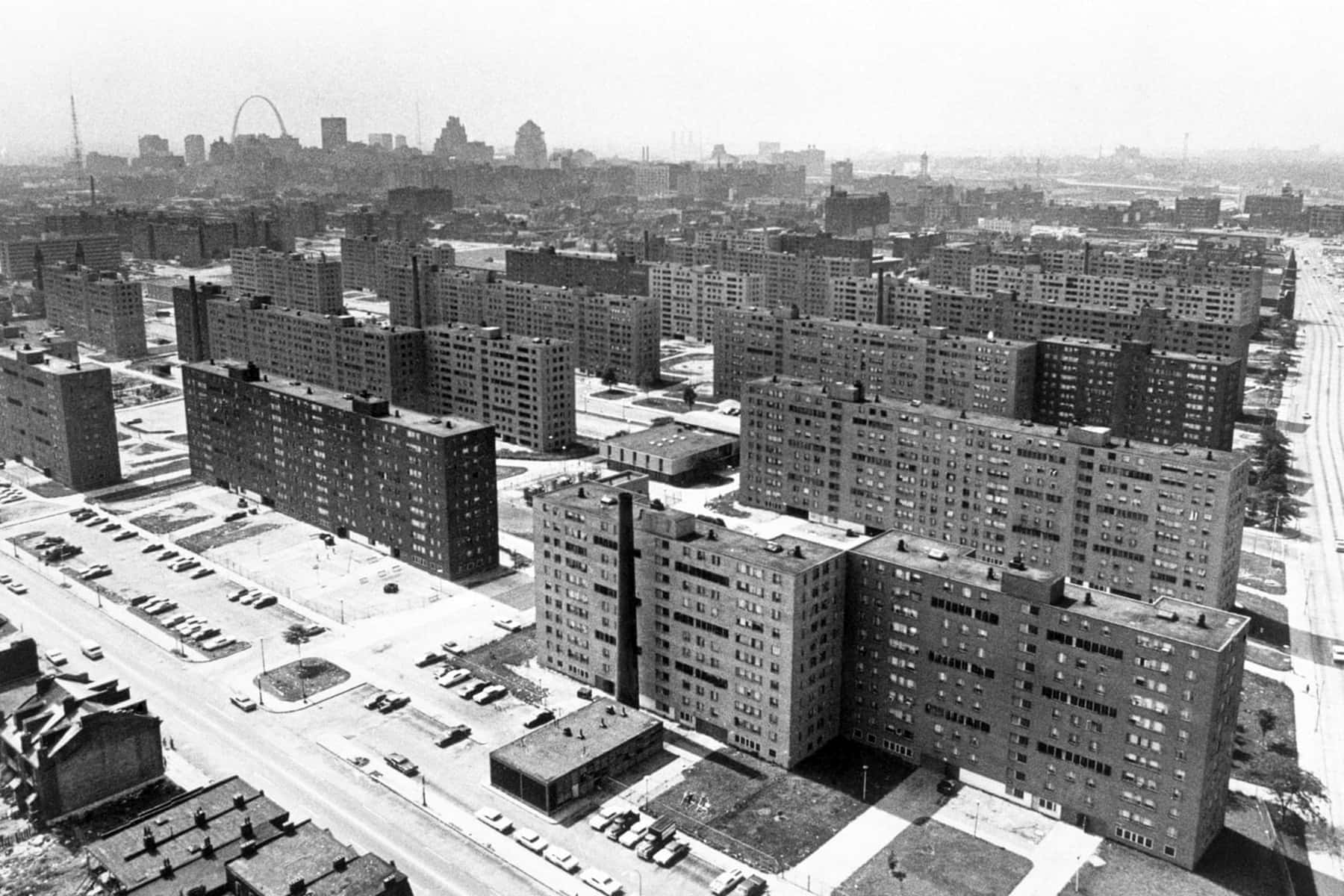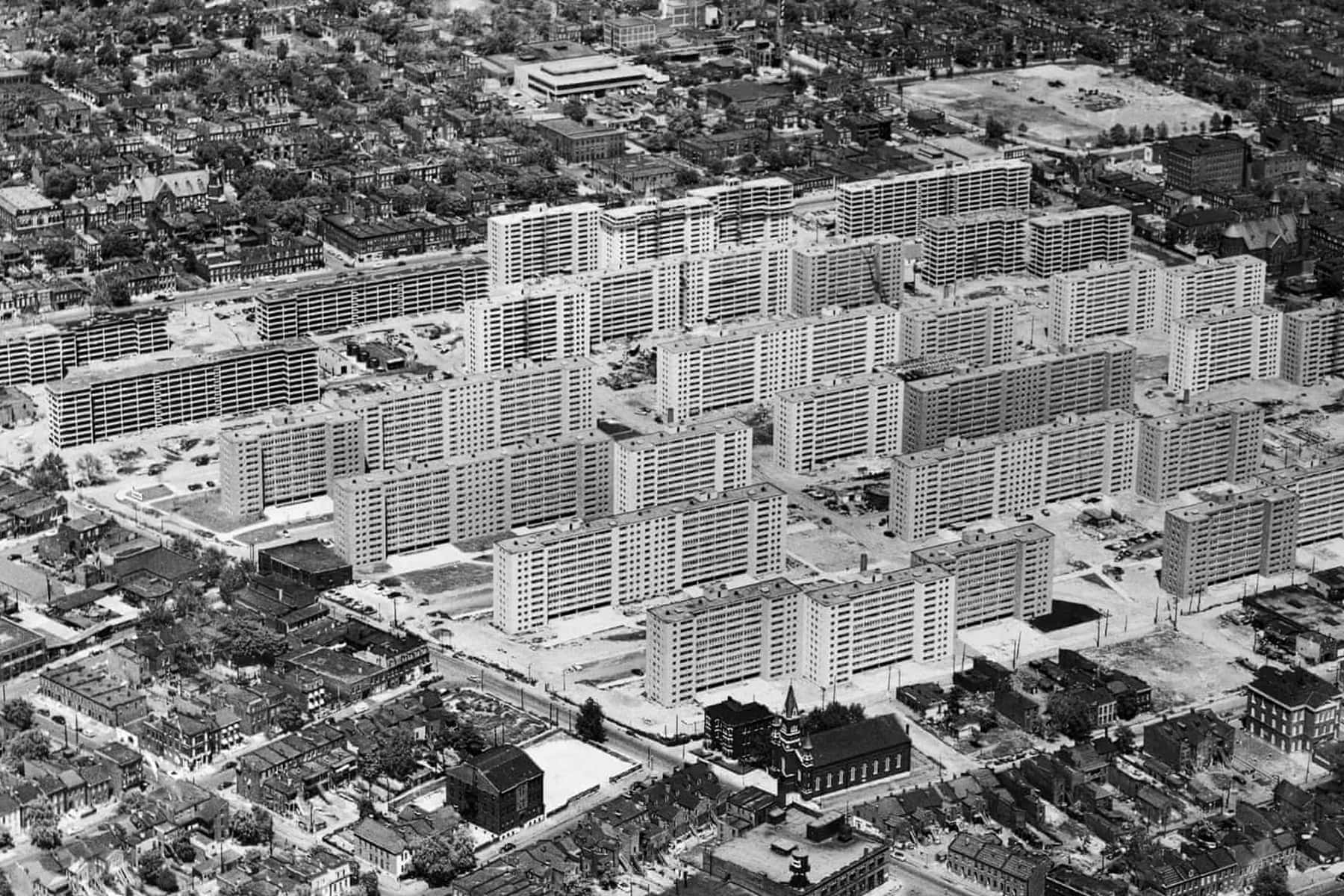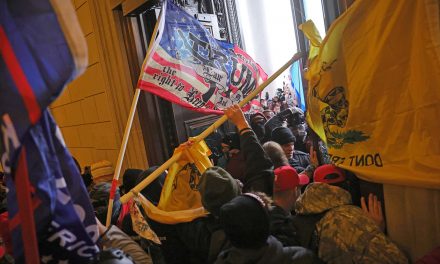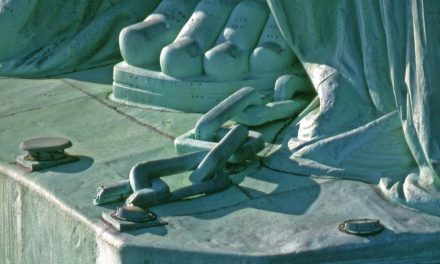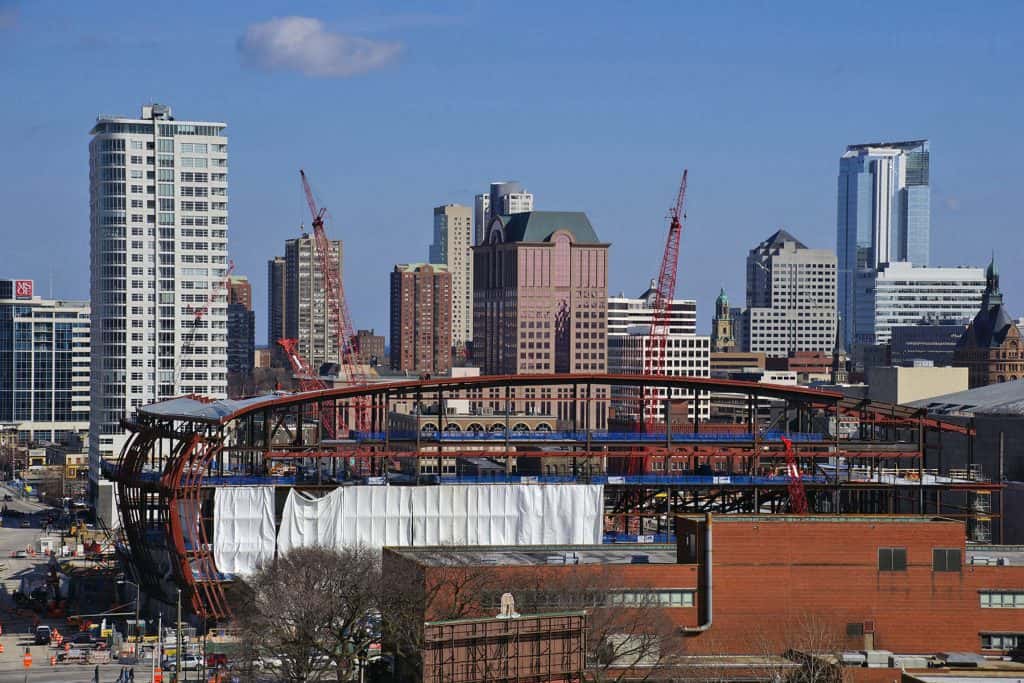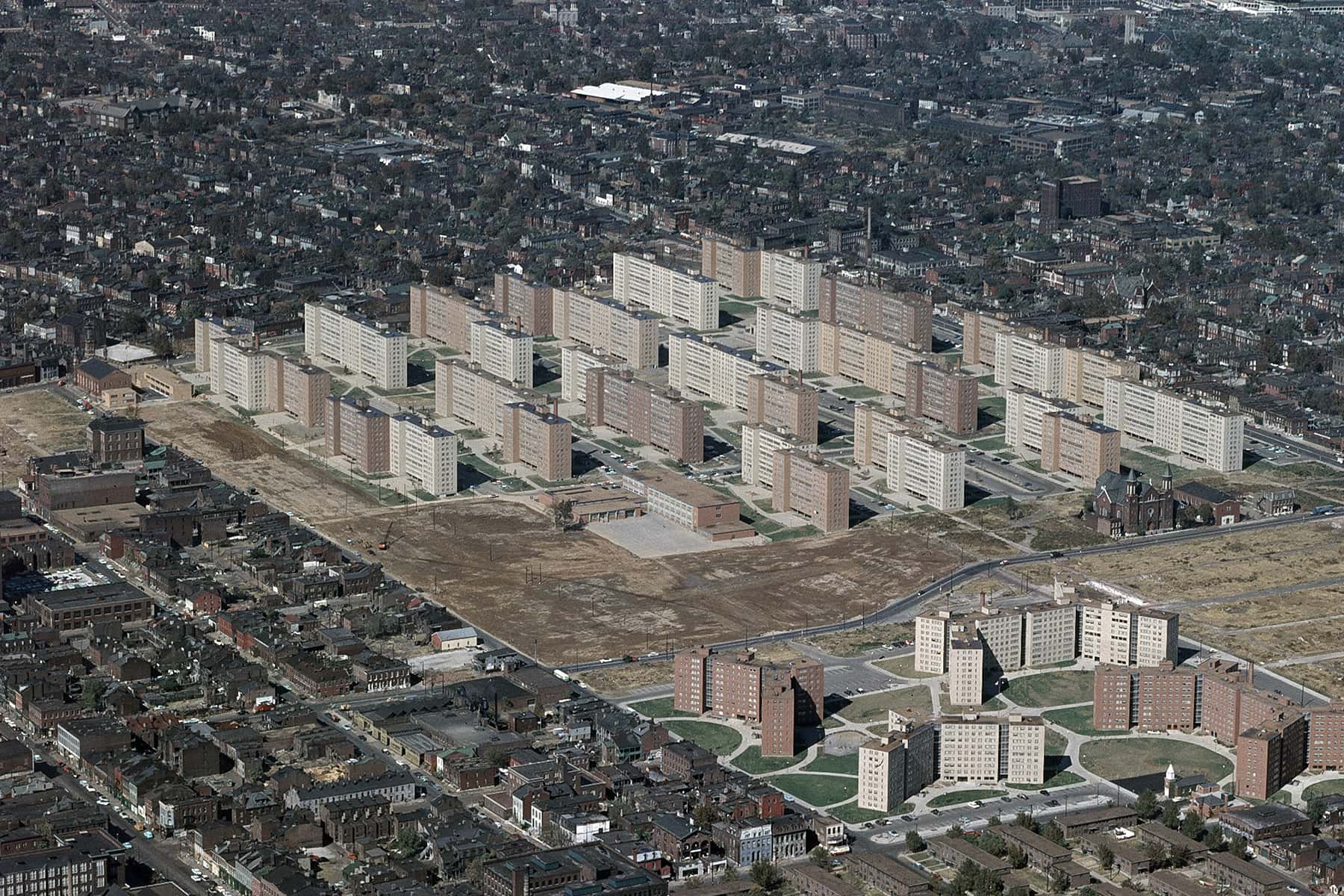
From its fanfare opening in 1954 to its live-on-TV demolition three decades later, the St. Louis public housing project remains a powerful symbol of the social, racial and architectural tensions that dogged America’s cities in the mid-20th century.
If you propose a high-rise public housing project in America, your opponents will almost certainly use Pruitt-Igoe as a rhetorical weapon against you – and defeat you with it. The Captain WO Pruitt Homes and William L. Igoe Apartments, a racially segregated, middle-class complex of 33 11-story towers, opened to great fanfare on the north side of St. Louis between 1954 and 1956. But within a decade, it would become a decrepit warehouse exclusively inhabited by poor, black residents. Within two decades, it would undergo complete demolition.
Whether you call Pruitt-Igoe’s short, troubled existence a failure of architecture, a failure of policy, or a failure of society, its fate remains bound up with, and reflective of, the fate of many American cities in the mid-20th century.
Even before the dust settled from the infamous, widely televised 1972 implosion of one of Pruitt-Igoe’s buildings (the last of which wouldn’t fall until 1976), the argument that the design had doomed it gained serious traction. Architectural historian Charles Jencks cites that much-seen dynamiting as the moment “modern architecture died.”
Other detractors used the occasion to hold up its architect, Minoru Yamasaki, for condemnation as a figurehead of all the supercilious, social-engineering modernists too high-minded and self-regarding to consider the needs of regular people. But on closer examination, Yamasaki comes out looking more like a victim himself.
Commissioned to design a public housing project federally financed under the Housing Act of 1949, the Japanese-American architect at first came up with a mixed-rise cluster of buildings. Objecting to the price of his plan, the Public Housing Administration insisted on a cost-saving uniform tower height of 11 stories. The Korean War and squabbles in Congress ensured that the construction budget only got more straitened thereafter, resulting in poor build quality and cheap fixtures that showed strain not long after the first occupants arrived.
Those inclined to read the story of Pruitt-Igoe as a morality play of 20th-century architectural hubris tend to describe Yamasaki’s design, laughingly, as “award-winning” when in fact it won no such thing. Architectural Forum did praise his original proposal as 1951’s “best high apartment,” citing its spatial efficiency, allowance for plenty of outdoor green space and innovations such as limited-stop elevators. But in 1965, the magazine re-examined the reality of the project and declared it a failure.
Pruitt-Igoe became a byword for the kind of dysfunctional urban abyss that, during the decades of “white flight” after the second world war, Americans who had the means believed they were escaping by moving out of cities. From the safety of their new, suburban communities, they looked upon central cities as too dirty, too crowded, too criminal – and, in many regions of the country, too black.
Not even Pruitt-Igoe’s heartiest apologists would call it a success. Its 2,870 units reached a peak of 91% occupancy in 1957, a figure that would plummet below 35% by 1971, when just 600 people remained in the 17 of the complex’s buildings that were not yet boarded up. Reports proliferated of property crime, gang activity, drug dealing, prostitution and murder. Heaters, toilets, garbage incinerators and electricity all malfunctioned, and at one point the faulty plumbing let loose floods of raw sewage through the hallways.
Though built for the middle class, Pruitt-Igoe became an economic and racial ghetto soon after it opened, in large part due to bad timing. The design, drawn up when Missouri law still mandated the segregation of public facilities, originally designated the Pruitt half of the complex (named after second world war fighter pilot Wendell O Pruitt) for black residents only, and the Igoe half (after former US Congressman William L Igoe) as white only.
But then came sweeping desegregation following the US supreme court’s 1954 Brown vs Board of Education verdict. In the aftermath, fearful white residents took flight, and the whole of Pruitt-Igoe became an exclusively black dwelling – with many black residents also decamping for the periphery, reducing Pruitt-Igoe’s tenant pool to those who simply couldn’t live anywhere else.
Often, these residents arrived as migrants from the US’s underdeveloped south, in search of work in the industries that, so they discovered, had already left for the suburbs themselves. Essential building maintenance, paid for by modest rental fees drawn from an ever smaller and more impoverished group of tenants, ended up deferred and ultimately denied. And so the people of Pruitt-Igoe made do as best they could in their increasingly derelict homes, feeling marooned on the end of a city seemingly on its own inexorable downward slide.
Why did St. Louis take on the public-housing mandate that produced the likes of Pruitt-Igoe in the first place? In the late 1940s, when the growth of American cities looked unstoppable, officials had projected a million-strong population by 1970 that would require aggressive “slum clearance” and high-density “urban renewal.” In reality, St. Louis lost a third of its residents over that period – a decline that had begun as early as the 1930s.
Even today, when our eyes have supposedly grown accustomed to all manner of developments meant to shock us with their sheer incongruity, aerial photographs of the Pruitt-Igoe complex give you pause. There it stands, like a poor man’s Ville Radieuse, on 23 freshly cleared hectares of St. Louis’s existing urban fabric, looking utterly alien to the miles of low-rise 19th and early 20th-century brick structures surrounding it.
But these images of Pruitt-Igoe have a much less firm a place in the culture than those of Pruitt-Igoe’s destruction, an event that – though commentators have used it in the service of a variety of political points – on balance reinforced the American fear of the type of tall, high-density housing that is so common today in the rich cities of east Asia.
The same animus manifests, to an extent, in England as well; the year before Pruitt-Igoe came fully down, JG Ballard published High Rise, his novel of an upper-middle-class London condominium tower that devolves almost immediately into an ultra-violent bacchanal.
“I never thought people were that destructive,” Yamasaki said to the Architectural Review, lamenting the vandalism that beset Pruitt-Igoe in the 1960s. “It’s a job I wish I hadn’t done.”
But while Pruitt-Igoe underwent its prolonged, agonizing demolition in the early 1970s, a much more iconic work of Yamasaki’s opened for business: the twin towers of New York City’s World Trade Center. It took a deliberate, rigorously planned act of terrorism to bring down that piece of architectural modernism, whereas Pruitt-Igoe met its end in a perfect storm of 20th-century economic, demographic and political urban misfortunes.
Colin Marshall
Library of Congress
Originally published on The Guardian as Pruitt-Igoe: the troubled high-rise that came to define urban America – a history of cities in 50 buildings, day 21
Help deliver the independent journalism that the world needs, make a contribution of support to The Guardian.

